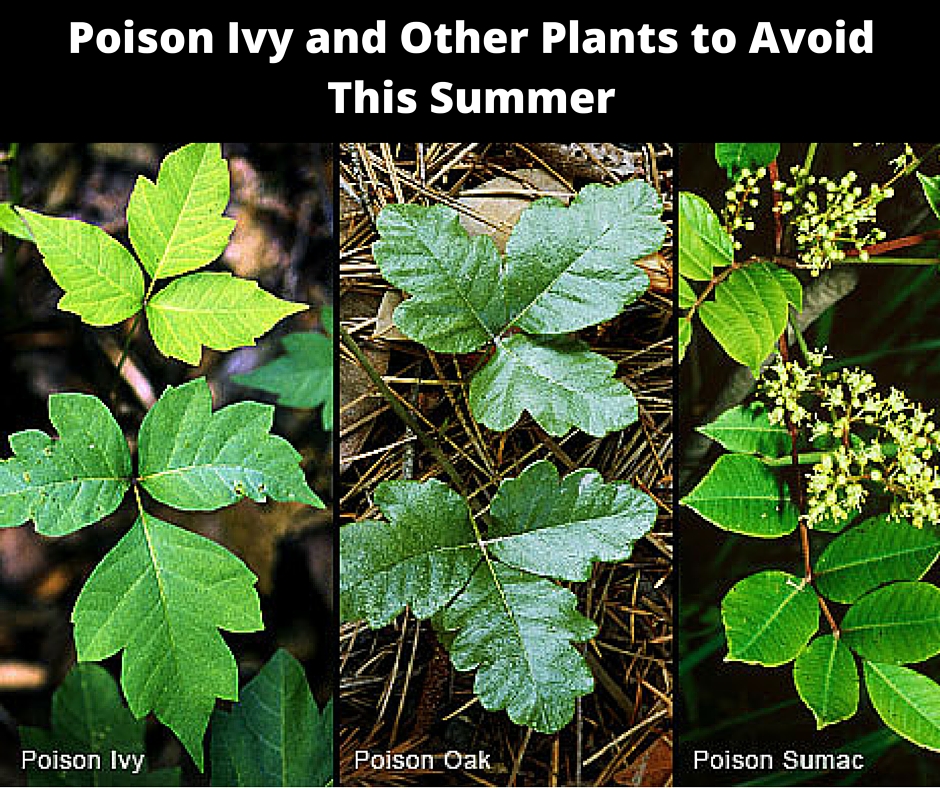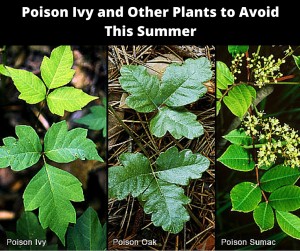
 Does your skin crawl a little just hearing the words poison ivy, poison sumac, or poison oak? Don’t worry, you’re not alone. These three itchy plants are definitely the trio to avoid this summer. An estimated 40 million Americans go to the doctor every summer to be treated for brushes with one of these plants. Even if you’ve never gotten a rash from these plants before, it doesn’t mean it won’t happen in the future.
Does your skin crawl a little just hearing the words poison ivy, poison sumac, or poison oak? Don’t worry, you’re not alone. These three itchy plants are definitely the trio to avoid this summer. An estimated 40 million Americans go to the doctor every summer to be treated for brushes with one of these plants. Even if you’ve never gotten a rash from these plants before, it doesn’t mean it won’t happen in the future.
How Do You Identify the Poison Plants?
When you’re out in the woods, or even in your backyard, there are ways to identify the poison plants so you don’t come into contact with them.
For poison ivy, look for these identifiers:
-
- Poison ivy will always have three leaves, never more.
-
- Poison ivy always grows from left then right, never side by side.
-
- Poison ivy will never have thorns.
- Poison ivy is usually green in the summer, but it changes colors with the fall.
For poison sumac, here’s what you need to know:
Poison sumac grows on a woody shrub or small tree that’s anywhere from 5-20 feet tall.
-
- It has a sparse, open form.
- Poison sumac has seven-13 leaflets arranged in pairs, with a single leaflet at the end.
For poison oak, look for these traits:
-
- Poison oak, like poison ivy, will have three leaves.
-
- Poison oak can be red-tinged in the spring, green in the summer and yellow or red in the fall.
- The small flowers attached to poison oak leaves are white.
How Do You Know if You Have Poison Ivy, Poison Oak, or Poison Sumac?
There are pretty clear ways to tell if you have poison ivy, poison oak, or poison sumac, and the symptoms for all three are pretty similar. Look out for the following:
-
- Redness
-
- Itching
-
- Swelling
-
- Blisters
-
- For Poison Oak, you’ll see the rash form around your wrists, ankles and neck.
- For people who are highly allergic to the oil in the plants that causes the rash, you might have difficulty breathing or swelling of the face and mouth.
How Do You Treat the Poisonous Plant Rashes?
If you weren’t able to wash your hands and skin within the first hour of touching these three poisonous plants, then you might be in for an itchy several days. The rashes usually last from 10 days to three weeks, though it could be up to six weeks for more severe cases.
Here are some ways to treat the symptoms while you wait for the rash to heal:
-
- To help the itching, try a cold compress, calamine lotion, non-prescription hydrocortisone cream, or an antihistamine.
-
- If you have a small rash, you can try drugstore creams like Neosporin or Lanacane. If it’s blistering or swelling a lot, see a doctor!
- Apply a cold, wet cloth or soak the affected areas in cold water.
